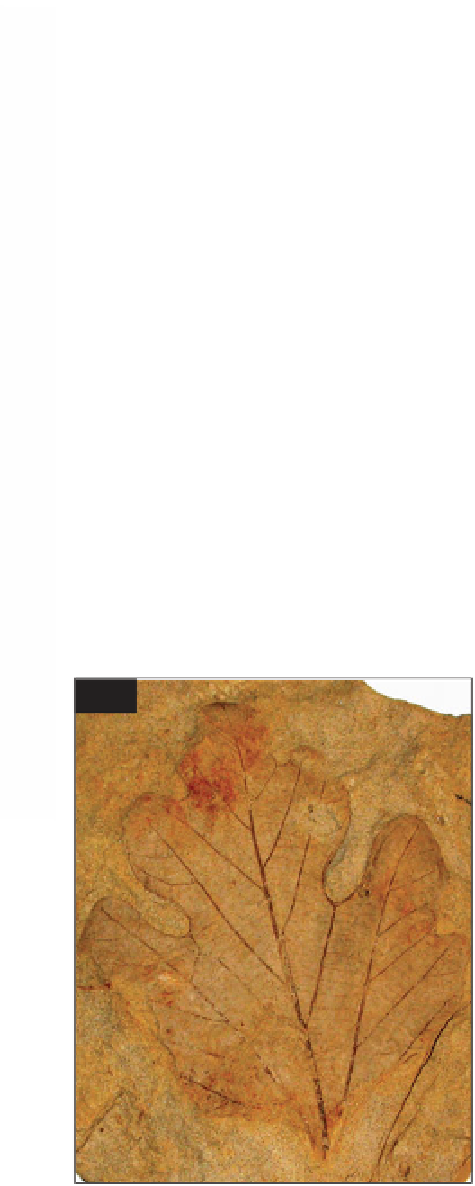Geoscience Reference
In-Depth Information
Fish
The fish fauna definitely has a more
'modern' appearance than that of the
Morrison Formation (Chapter 9) and
compares well with Green River (Chapter
11). It includes both chondrichthyans
(cartilaginous fish), such as sharks and rays
(e.g.
Lissodus
, a hybodont shark), and
osteichthyans (bony fish). The last group
includes bowfins (or freshwater dogfish,
e.g.
Cyclurus
, the most abundant Hell
Creek fish), gars (e.g.
Atractosteus
and
Lepisosteus
, both known from Green River),
plus rare sawfish, paddlefish, and
sturgeons ('
Acipenser
').
Plants
The flora of the Hell Creek Formation
is overwhelmingly dominated by
dicotyledonous angiosperms (flowering
plants) and to a lesser extent by
monocotyledenous angiosperms, which
had first evolved at the beginning
of the Cretaceous Period (
186
).
Common groups include the laurels,
sycamores, magnolias, cercidiphyllum,
arum, and palms. Less common are
barberry, buttercups, nettles, elm, mallow,
rose, coffeeberry, and dogwood. Rare
bryophytes, ferns, cycads, ginkgos, and
conifers are also recorded (Johnson, 2002).
P
ALEOECOLOGY OF THE
H
ELL
C
REEK
F
ORMATION
The Hell Creek Formation is a fluvial
deposit, laid down by meandering rivers,
which frequently flooded onto a broad
alluvial coastal plain on the eastern side of
the Rocky Mountains. The rivers flowed
east across this plain into a large epeiric
sea, the Western Interior Seaway, which
during Cretaceous times was retreating
southwards and eastwards, exposing the
coastal plain. Situated in a midlatitudinal
zone between about 40° and 50° N, the
environment was semi-tropical and
humid, with only mild seasonal weather
change.
White
et al
. (1998) discussed whether
such ancient fluvial systems are best
sampled by the stream channel deposits or
by the floodplain paleosols. Some scientists
believe that fossils found in floodplain
deposits best represent the overall
community because they were deposited
with little time averaging and are recovered
in place. Others believe that channel lag
deposits provide better sampling because
they sample the floodplain along its entire
course and concentrate the fossils so that
although they are geographically and
temporally averaged, they are actually
more representative. It is interesting to
note that lower parts of the Hell Creek
succession are dominated by channel
deposits, while upper parts are mainly
floodplain deposits.
Invertebrates
Both freshwater and marine mollusks
(including ammonites, scaphopods,
gastropods, and bivalves) have been
recorded, the marine forms coming
mainly, though not exclusively, from the
Breien Member.
186
186 The dicotyledon angiosperm Bisonia
BHIGR. Length 10 cm 4 in.



Search WWH ::

Custom Search